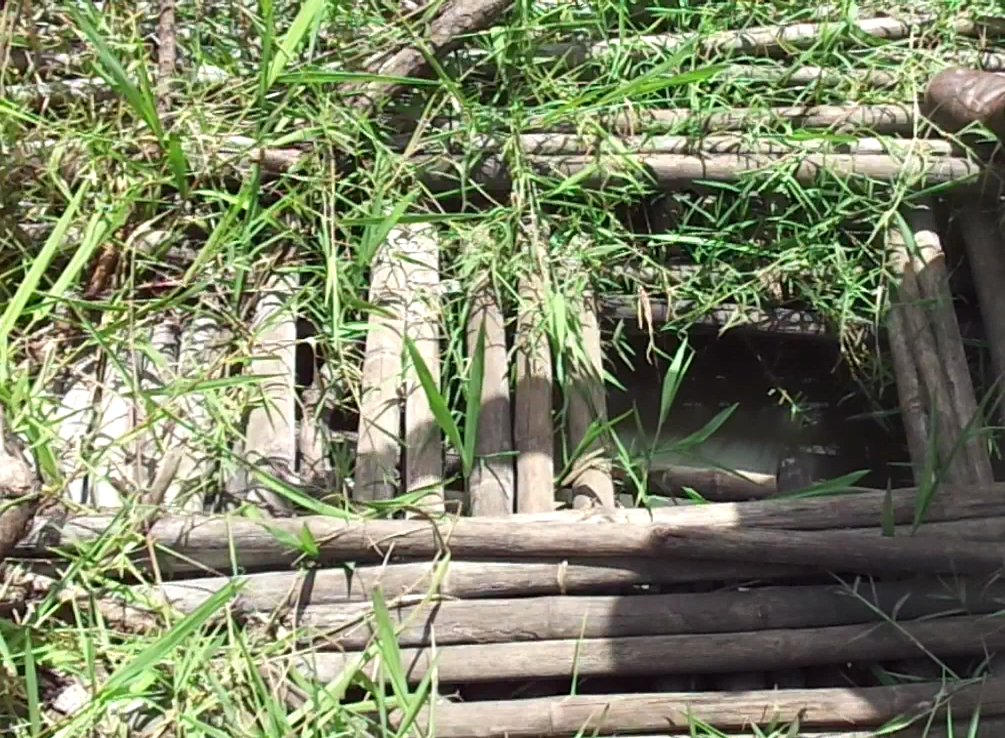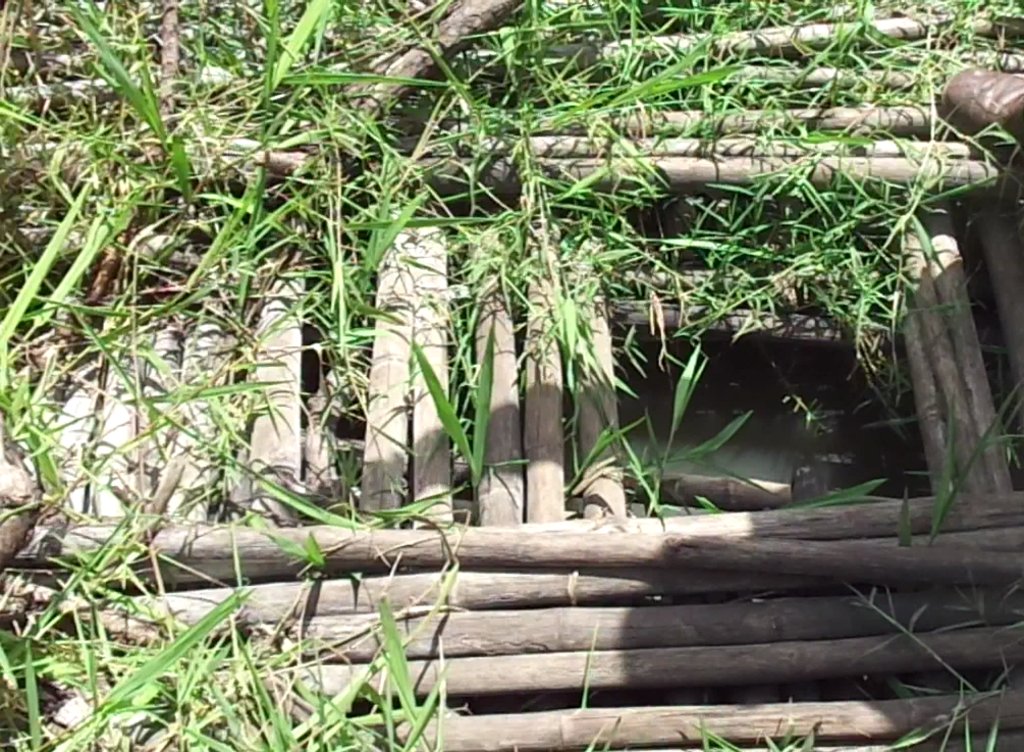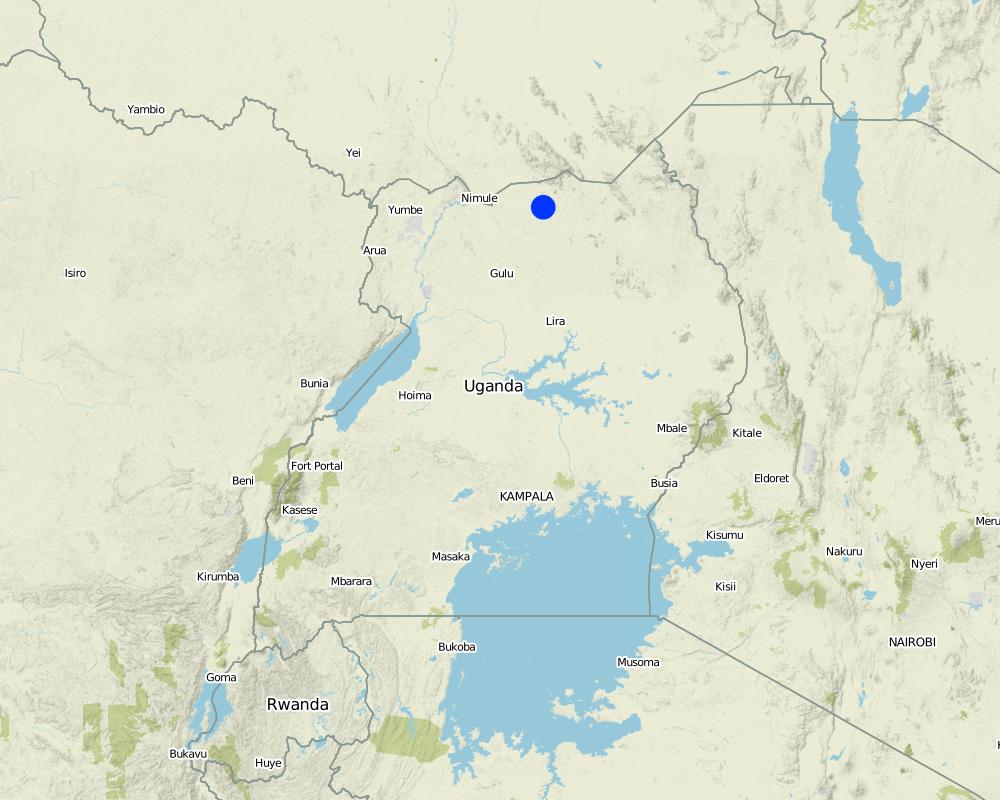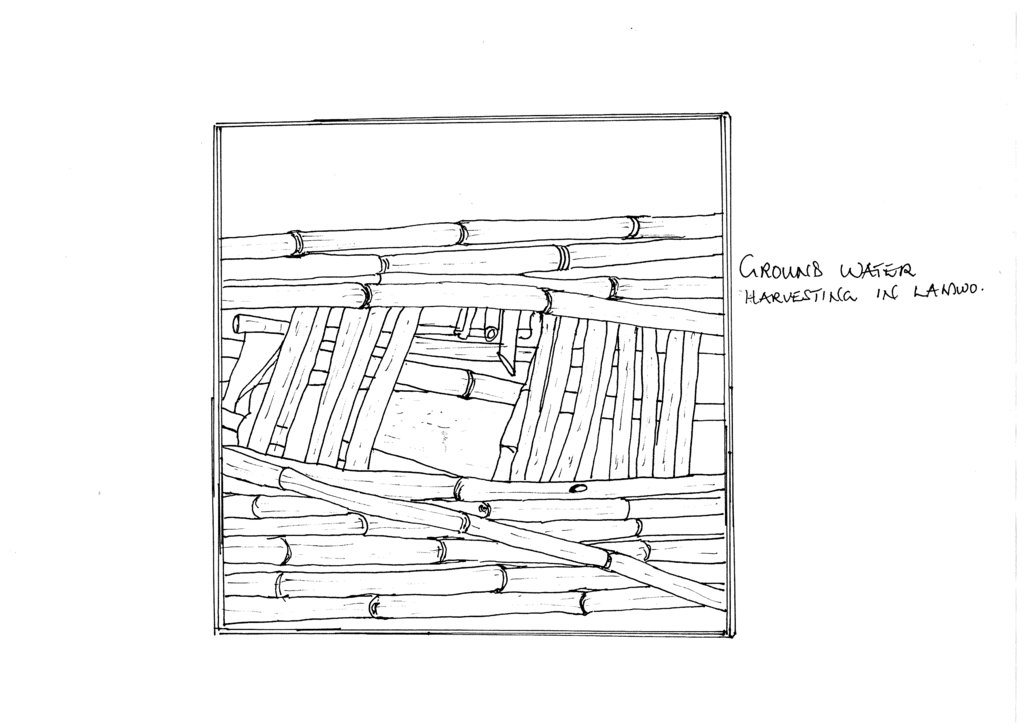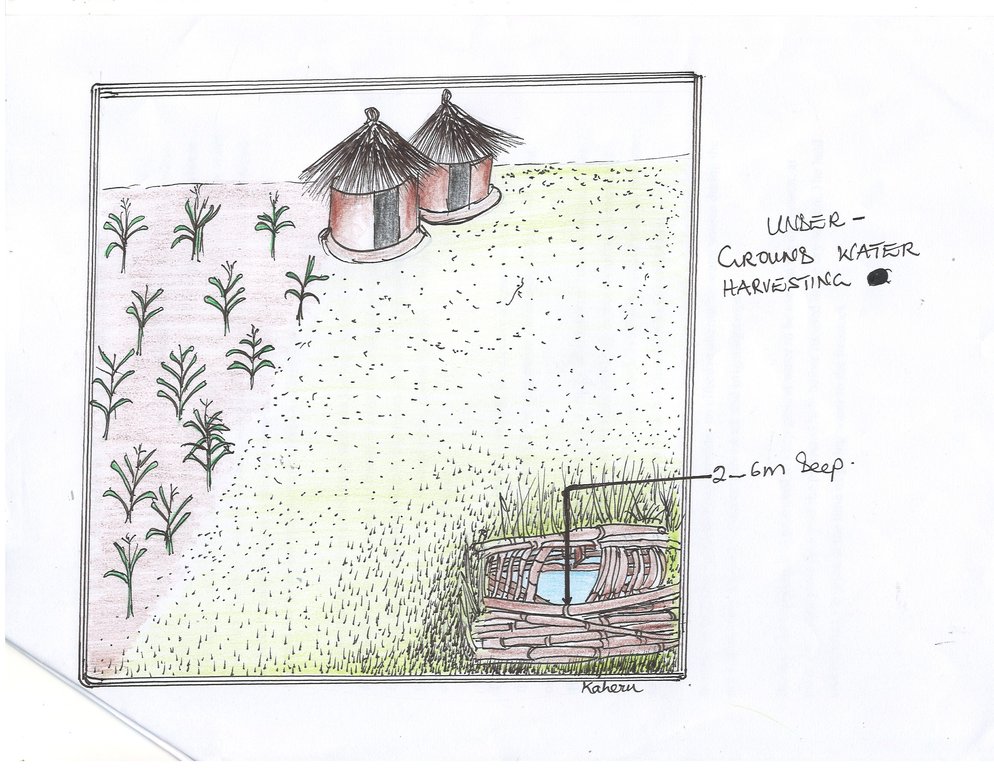Under ground water abstraction for livestock production [乌干达]
- 创建:
- 更新:
- 编制者: Kamugisha Rick Nelson
- 编辑者: JOY TUKAHIRWA, Bernard Fungo
- 审查者: Drake Mubiru, Nicole Harari, Renate Fleiner, Stephanie Jaquet, Rima Mekdaschi Studer
IET
technologies_2304 - 乌干达
- Under ground water abstraction for livestock production: May 22, 2018 (inactive)
- Under ground water abstraction for livestock production: July 16, 2018 (inactive)
- Under ground water abstraction for livestock production: March 22, 2019 (inactive)
- Under ground water abstraction for livestock production: Aug. 11, 2019 (public)
查看章节
全部展开 全部收起1. 一般信息
1.2 参与该技术评估和文件编制的资源人员和机构的联系方式
关键资源人
SLM专业人员:
Obita Churchill
Ayom village savings group
Ayom village, Ywaya parish, PADIBE west sub-county, Lamwo District
有助于对技术进行记录/评估的项目名称(如相关)
Scaling-up SLM practices by smallholder farmers (IFAD)有助于对技术进行记录/评估的机构名称(如相关)
Centre Ecologique Albert Schweitzer (CEAS) - 瑞士1.3 关于使用通过WOCAT记录的数据的条件
(现场)数据是什么时候汇编的?:
12/05/2017
编制者和关键资源人员接受有关使用通过WOCAT记录数据的条件。:
是
1.4 所述技术的可持续性声明
这里所描述的技术在土地退化方面是否存在问题,导致无法被认为是一种可持续的土地管理技术?:
否
2. SLM技术的说明
2.1 技术简介
技术定义:
Under groundwater is abstracted by excavating water abstraction points for livestock production.
Waterhole is excavated for abstracting underground water for watering livestock as well as irrigating crops during the dry season.
2.2 技术的详细说明
说明:
Farming in rural Northern Uganda is vulnerable to climate variability and drought in particular since it overwhelmingly depends on rainfall. Thus, innovative small scale farmers there resort to underground water resources to further their agricultural and water resources are sustained naturally through recharge. The mechanism used is in accessing underground water resources is termed underground water obstruction and involves excavation of structures such as open wells, soak pits, and recharge shaft/ trenches of 2-6 m deep hole, which is manually dug from the ground to allow water to come up (see Figure below).
Underground water abstraction is done by excavating a hole in the ground to reach water underground . A 2-6 m deep hole is manually dug in the ground/ soil to allow water to collect and come up. The hole is shaped in such a way that water does not flow out, and the top is covered to keep the water in the hole protected from contamination. The opening is covered with local materials like poles, bamboo stems (Bamboo aridinarifolia), etc. Water flows into the hole through various methods of groundwater recharge such as open wells, soak pits, and recharge shaft/ trench.
The activities involved in establishing such a underground water hole include (1) identifying suitable site for digging the hole, (2) looking for trainer or expert to advise on how to dig and cover the hole, (3) looking for labor, and tools (e.g. hoes, spades, poles, etc.), (4) digging the hole to a depth of about 2-6 m, depending on the level of water table, (5) protect the hole with bamboo or wood to ensure hygiene and from people falling in.
The returns derived from this technology include: an effective alternative water source during the dry season which is used for crop irrigation (e.g. maize – Zea mays; cabbage - Brassica oleracea) and for livestock production/ watering.
This technology is most preferred because it is cheap, affordable and easy to maintain. The only costs are at the establishment phase. Its main challenge is that it can be contaminated when managed poorly. To ensure this, the farmer needs to keep in contact with the land user to ensure maximum proper management of the hole to minimise contamination.
In terms of impacts, the technology provides an effective alternative water source during the dry season, which is used majorly for livestock and irrigating crops.
Because the technology is promoted as a supplementary water source for the dry season, during the wet season grass may grow on top of the protected hole. Before its use in the dry season the land user removes the grass before abstracting the well water for livestock or crop production.
The resources required for establishing and maintaining this technology include knowledge of suitable sites for the technology, expert advice on construction of the structure, labour, and tools (e.g. hoes, spades, poles, etc.).
This technology is liked by farmers because it is fairly inexpensive and easy to maintain. It may be considered costly are at the establishment level but in the long run, the returns are worth the investment. The other concern is that it can be contaminated when managed poorly.
2.3 技术照片
关于照片的一般说明:
The grass left to grow does not imply poor management but a protection for a longer period leading to dry season when there is shortage of water.
2.4 技术视频
注释、简短说明:
Video showing underground water abstraction for animal production using : A deep hole is dug and covered with wood and bamboo to provide water for livestock during the dry season.
日期:
12/05/2017
位置:
Ayom Village, Nyaya parish, Padibe West Sub-county, Lamwo District.
摄影师的名字:
Issa Aiga
2.5 已应用该技术的、本评估所涵盖的国家/地区/地点
国家:
乌干达
区域/州/省:
Nothern Region
有关地点的进一步说明:
Lamwo
注释:
Map showing technology site in Northern Uganda
Map
×2.6 实施日期
注明实施年份:
2016
如果不知道确切的年份,请说明大概的日期:
- 不到10年前(最近)
2.7 技术介绍
详细说明该技术是如何引入的:
- 通过土地使用者的创新
3. SLM技术的分类
3.1 该技术的主要目的
- 改良生产
- 结合其他技术保护流域/下游区域
- 降低灾害风险
- 适应气候变化/极端天气及其影响
- 减缓气候变化及其影响
3.2 应用该技术的当前土地利用类型

农田
- 一年一作
主要农作物(经济作物及粮食作物):
Maize

牧场
集约放牧/饲料生产:
- 收割和携带/零放牧
如果由于技术的实施而导致土地用途发生变化,则在技术实施前说明土地利的用途。:
crop land
3.3 有关土地利用的更多信息
该技术所应用土地的供水:
- 混合雨水灌溉
注释:
Irrigated with the harvested water.
每年的生长季节数:
- 2
具体说明:
During the dry season because this is the appropriate time whe there are no rains.
牲畜密度(如相关):
Not relevant
3.4 该技术所属的SLM组
- 农畜综合管理
- 集水
- 灌溉管理(包括供水、排水)
3.5 技术传播
具体说明该技术的分布:
- 适用于特定场所/集中在较小区域
注释:
Established far distant from the homes and near the streams.
3.6 包含该技术的可持续土地管理措施

结构措施
- S3:分级沟渠、渠道、水道
- S6:墙、障碍物、栅栏、围墙
- S7:集水/供水/灌溉设备
- S9:动植物庇护所
3.7 该技术强调的主要土地退化类型

土壤水蚀
- Wt:表土流失/地表侵蚀
- Wg:冲沟侵蚀/沟蚀
- Wm:块体运动/滑坡
- Wo:场外劣化效应

水质恶化
- Hs:地表水良变化
- Hg:地下水/含水层水位的变化
- Hq:地下水水质下降
3.8 防止、减少或恢复土地退化
具体数量名该技术与土地退化有关的目标:
- 防止土地退化
- 减少土地退化
注释:
Through water erosion
4. 技术规范、实施活动、投入和成本
4.1 该技术的技术图纸
4.2 技术规范/技术图纸说明
Sinking the hole should be at least between 2-6m deep depending on the level of the water table established on a gentle sloping.
4.4 技术建立活动
| 活动 | 措施类型 | 时间 | |
|---|---|---|---|
| 1. | Identification of suitable site for establishing the hole | 管理 | Once /before establishment |
| 2. | Look for the expert to train how toLook for the expert to train how to make the hole and cover make | 管理 | Once before establishment |
| 3. | look for labour to dig the hole | 管理 | Before establishment |
| 4. | buy inputs required ( hoes, spades, poles / bamboo | 农业学的 | During establishment |
| 5. | sinking of the pit hole at least 2-6m deep depending on the level of the water table | 结构性的 | During establishment |
| 6. | protect the hole with Bamboo and poles but ensure you leave some space for water scooping. | 管理 | After estabiishment |
4.5 技术建立所需要的费用和投入
| 对投入进行具体说明 | 单位 | 数量 | 单位成本 | 每项投入的总成本 | 土地使用者承担的成本% | |
|---|---|---|---|---|---|---|
| 劳动力 | Labour | Persons | 5.0 | 5000.0 | 25000.0 | |
| 设备 | Hoe | Pieces | 1.0 | 10000.0 | 10000.0 | |
| 设备 | Spade | Pieces | 1.0 | 10000.0 | 10000.0 | |
| 设备 | Poles | Pieces | 100.0 | 200.0 | 20000.0 | |
| 植物材料 | Bamboo | Pieces | 1.0 | 10000.0 | 10000.0 | |
| 技术建立所需总成本 | 75000.0 | |||||
4.6 维护/经常性活动
| 活动 | 措施类型 | 时间/频率 | |
|---|---|---|---|
| 1. | Fencing | 结构性的 | After establishment |
| 2. | Slashing | 管理 | After establishment |
| 3. | Hygiene inspection | 管理 | Routine / Daily - before and after establishment |
4.7 维护/经常性活动所需要的费用和投入(每年)
| 对投入进行具体说明 | 单位 | 数量 | 单位成本 | 每项投入的总成本 | 土地使用者承担的成本% | |
|---|---|---|---|---|---|---|
| 劳动力 | labour for fencing | Persons | 2.0 | 5000.0 | 10000.0 | |
| 劳动力 | Labour for slashing | Persons | 2.0 | 5000.0 | 10000.0 | |
| 劳动力 | Labour for Hygiene inspection (monthly) | Persons | 3.0 | 2000.0 | 6000.0 | |
| 技术维护所需总成本 | 26000.0 | |||||
注释:
The costs of maintenance are higher than establishment due to the daily routine costs.Hygiene inspection does not require alot of labour.It only requires more routine inspection.
4.8 影响成本的最重要因素
描述影响成本的最决定性因素:
Hygiene inspection.
5. 自然和人文环境
5.1 气候
年降雨量
- < 250毫米
- 251-500毫米
- 501-750毫米
- 751-1,000毫米
- 1,001-1,500毫米
- 1,501-2,000毫米
- 2,001-3,000毫米
- 3,001-4,000毫米
- > 4,000毫米
有关降雨的规范/注释:
Fair rainfall in the months of April to October and dry spell from Nov-March
农业气候带
- 半湿润
5.2 地形
平均坡度:
- 水平(0-2%)
- 缓降(3-5%)
- 平缓(6-10%)
- 滚坡(11-15%)
- 崎岖(16-30%)
- 陡峭(31-60%)
- 非常陡峭(>60%)
地形:
- 高原/平原
- 山脊
- 山坡
- 山地斜坡
- 麓坡
- 谷底
垂直分布带:
- 0-100 m a.s.l.
- 101-500 m a.s.l.
- 501-1,000 m a.s.l.
- 1,001-1,500 m a.s.l.
- 1,501-2,000 m a.s.l.
- 2,001-2,500 m a.s.l.
- 2,501-3,000 m a.s.l.
- 3,001-4,000 m a.s.l.
- > 4,000 m a.s.l.
说明该技术是否专门应用于:
- 凹陷情况
5.3 土壤
平均土层深度:
- 非常浅(0-20厘米)
- 浅(21-50厘米)
- 中等深度(51-80厘米)
- 深(81-120厘米)
- 非常深(> 120厘米)
土壤质地(表土):
- 中粒(壤土、粉土)
土壤质地(地表以下> 20厘米):
- 中粒(壤土、粉土)
表土有机质:
- 中(1-3%)
5.4 水资源可用性和质量
地下水位表:
5-50米
地表水的可用性:
中等
水质(未处理):
良好饮用水
水的盐度有问题吗?:
否
该区域正在发生洪水吗?:
否
5.5 生物多样性
物种多样性:
- 中等
栖息地多样性:
- 中等
5.6 应用该技术的土地使用者的特征
定栖或游牧:
- 定栖的
生产系统的市场定位:
- 混合(生计/商业
非农收入:
- 低于全部收入的10%
相对财富水平:
- 贫瘠
个人或集体:
- 团体/社区
机械化水平:
- 手工作业
性别:
- 女人
- 男人
土地使用者的年龄:
- 儿童
- 青年人
5.7 应用该技术的土地使用者拥有或租用的平均土地面积
- < 0.5 公顷
- 0.5-1 公顷
- 1-2 公顷
- 2-5公顷
- 5-15公顷
- 15-50公顷
- 50-100公顷
- 100-500公顷
- 500-1,000公顷
- 1,000-10,000公顷
- > 10,000公顷
这被认为是小规模、中规模还是大规模的(参照当地实际情况)?:
- 中等规模的
5.8 土地所有权、土地使用权和水使用权
土地所有权:
- 社区/村庄
土地使用权:
- 社区(有组织)
用水权:
- 社区(有组织)
注释:
Have community management rules
5.9 进入服务和基础设施的通道
健康:
- 贫瘠
- 适度的
- 好
教育:
- 贫瘠
- 适度的
- 好
技术援助:
- 贫瘠
- 适度的
- 好
就业(例如非农):
- 贫瘠
- 适度的
- 好
市场:
- 贫瘠
- 适度的
- 好
能源:
- 贫瘠
- 适度的
- 好
道路和交通:
- 贫瘠
- 适度的
- 好
饮用水和卫生设施:
- 贫瘠
- 适度的
- 好
金融服务:
- 贫瘠
- 适度的
- 好
6. 影响和结论性说明
6.1 该技术的现场影响
社会经济效应
生产
作物生产
注释/具体说明:
Due to irrigation water
畜牧生产
水资源可用性和质量
家畜用水的可用性
注释/具体说明:
water is available for livestock during dry spells
家畜用水的质量
注释/具体说明:
underground water clean. not poluted
灌溉用水的可用性
注释/具体说明:
water available for irrigating crops in the dry season
灌溉用水的质量
注释/具体说明:
underground water is not poluted
收入和成本
农业收入
注释/具体说明:
extented crop cultivation and increased production during dry seasons
6.2 该技术的场外影响已经显现
水资源可用性
注释/具体说明:
Especially during the dry season
旱季稳定可靠的水流
注释/具体说明:
Kept to be used in the dry season
下游洪水
注释/具体说明:
Water is controlled using the bore hole
6.3 技术对渐变气候以及与气候相关的极端情况/灾害的暴露和敏感性(土地使用者认为的极端情况/灾害)
渐变气候
渐变气候
| 季节 | 气候变化/极端天气的类型 | 该技术是如何应对的? | |
|---|---|---|---|
| 年温度 | 增加 | 非常不好 | |
| 季节性温度 | 冬季 | 增加 | 非常不好 |
6.4 成本效益分析
技术收益与技术建立成本相比如何(从土地使用者的角度看)?
短期回报:
稍微积极
长期回报:
积极
技术收益与技术维护成本/经常性成本相比如何(从土地使用者的角度看)?
短期回报:
稍微积极
长期回报:
稍微积极
注释:
The difference is only with the hygiene inspection costs. low at establishment but high at hygiene inspection which is routine
6.5 技术采用
- 单例/实验
在所有采用这项技术的人当中,有多少人是自发地采用该技术,即未获得任何物质奖励/付款?:
- 0-10%
6.6 适应
最近是否对该技术进行了修改以适应不断变化的条件?:
是
若是,说明它适应了哪些变化的条件:
- 气候变化/极端气候
具体说明技术的适应性(设计、材料/品种等):
Adding Bamboo to cover the top in addition to poles.
6.7 该技术的优点/长处/机会
| 土地使用者眼中的长处/优势/机会 |
|---|
| The technology provides Constant water supply for livestock production during the dry season. |
| Its cost effective and affordable by the local communities. Once established the costs of maintenance just slightly goes high due to routine inspection. |
| It can be replicated and used by other farmers in other areas. |
| 编制者或其他关键资源人员认为的长处/优势/机会 |
|---|
| The technology is effective in minimising water wastage and enhancing water access during the dry season but is established over along distance 3-5 km from the land user. |
6.8 技术的弱点/缺点/风险及其克服方法
| 土地使用者认为的弱点/缺点/风险 | 如何克服它们? |
|---|---|
| The technology requires routine labour for inspection and technical know how. | Training on hygiene inspection. |
| Dangerous to roaming animals and people when they fall in. | Protection using a berbed wire fence or using local local materials (wood). |
| 编制者或其他关键资源人员认为的弱点/缺点/风险 | 如何克服它们? |
|---|---|
| Not fenced. The fence was removed. | Fencing to protect animals . |
| Need strong bylaw on under groundwater management. | Facilitate formulation and implementation of bylaw on under groundwater management. |
7. 参考和链接
7.1 信息的方法/来源
- 实地考察、实地调查
01 key informant
- 与土地使用者的访谈
01
链接和模块
全部展开 全部收起链接
无链接
模块
无模块


